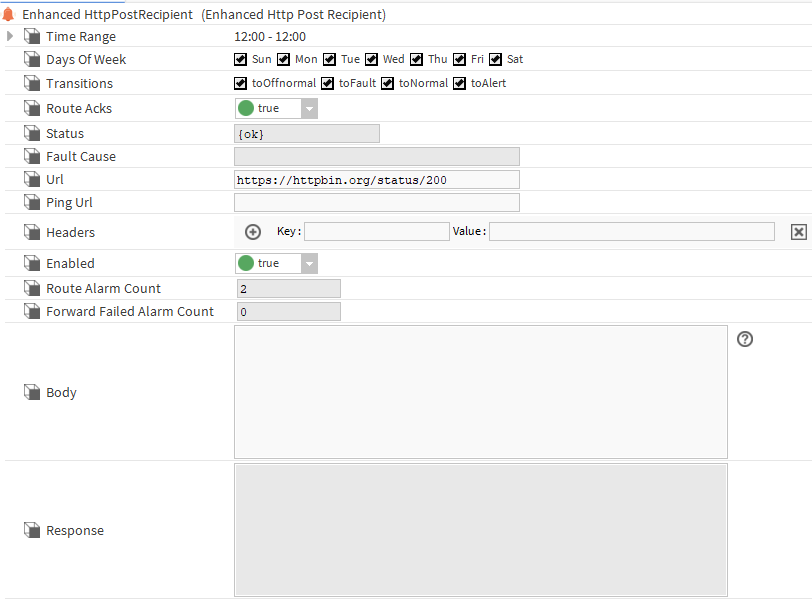EnhancedHttpPostRecipient
Description
The EnhancedHttpPostRecipient is used to push an alarm to an external API just like the HttpPostRecipient but It brings some new features :
Add your own body to the request
Get the response of the request
Deal with the errors by forwarding the alarm in a new topic

Implementation
It works exactly the same as HttpPostRecipient except you can add the body to your request.
You can also handle the error in the request:
Link the "alarm" slot of alarm classes to the "routeAlarm" slot of the EnhancedHttpPostRecipient
Link the “forwardFailedAlarm” slot to anyhting else handling topi. In the example it is linked to another EnhancedHttpPostRecipient sending a request to a different URL. Donig something like this allows you to be almost sure that at least one request will not fail. Because if an alrm is triggered it is quite important to be aware of it.

Properties
Status: Indicates the general status of the component, {ok} if the operation was successful or {fault} to indicate abnormal behavior
FaultCause: Indicates the cause of a configuration error. The FaultCause is empty if the component is properly configured.
Url: The address of the API server to make the POST request
PingUrl: The address to ping to test the API server
Headers: Optional HTTP headers
Enabled: Boolean turning on and off the recipient
RouteAlarmcount: the number of succeeding request
ForwardFailedAlarmCount: the number of failed request wich have been forwarded
Body: the body of the request you want to send
Response: the body of the request response
Actions
Ping: Ping the "pingUrl" address to try to test the API server
Topic
ForwardFailedAlarm: the alarm is forwarded is this topic when the return status of the request is an error (greater than 399).
